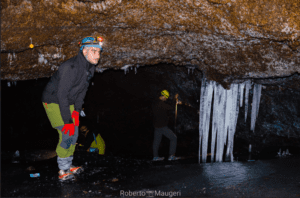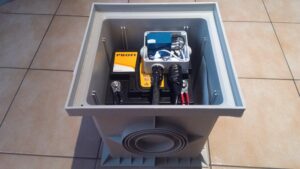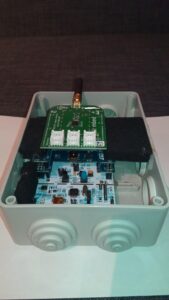Sometimes, the best way to impact the world is to know how to be invisible, thanks to a SenseoTile.box. This is what we discovered after talking to Alessandro Bonfire, a researcher at INGV, Italy’s national institute of geophysics and volcanology, and Rosario Catania, an ST process engineer. We first met both of them a few years ago as they were using on Mt Etna. Coincidentally, the team recorded a 4.3 earthquake on the ST devices two months after this article. It provided them with critical data, thus vindicating their approach. The scientists, therefore, got more SensorTile.box systems and moved them to new locations to track more geological activities.
Where Are the SensorTile.box Kits?
Grotta del Gelo and San Leo
The team placed a SensoTile.box kit inside the Grotta del Gelo on the north side of Mount Etna. However, their biggest efforts currently focus on San Leo, situated on the opposite side of the volcano. At this location, the team set up three SensorTile.box kits. The first one is identical to the one used on the Pernicana belt and helps provide control data. A second unit samples data at 6 kHz. The scientists thus hope to evaluate the quality of the data and its impact on battery life. Finally, they attached the third box to a solar panel and a LoRa transceiver for continuous streaming.
Public Appearances
Anyone can check the data streaming from the SensorTile.box running on solar power on the Etna Radio Observatory (ERO) website. It’s the 11th and 12th graphs from the top marked “ST.BOX”. The one marked “SEPERO PARK” is at the headquarters’ park on Mount Etna, while the one named “SEPEROMW” is on Mount San Leo. The website demonstrates that the SensorTile.box is part of a larger infrastructure. Over time, the team hopes to install more SensorTile.box around craters, seismic faults, caves, and other areas that are either hard to reach or potentially dangerous. The two men also envision publishing their results to garner further interest.
Why Use SensorTile.box Kits?
Low Cost
In December 2020, the LSM6DSOX of the SensorTile.box was sensitive enough the record the earthquake that hit Catania. The scientists also got data from the kit’s tri-axis LIS2DW12 and LIS3DHH to improve the overall accuracy. As Alessandro and Rosario explain, the ST devices won’t replace the more expensive equipment traditionally used in seismology. However, thanks to the SensorTile.box accessible programming and far lower cost, scientists can run many experiments and use them in riskier places since losing one device to a natural event becomes trivial. Destroying five SensorTile.box during a volcanic eruption is far less costly than one traditional piece of equipment. As a result, it opens up the scientific community to experiments previously unfeasible.
Low Maintenance and Long Battery Life
Rosario and Alessandro also pointed out a critical advantage: the battery life. Their experiment with a SensorTile.box can run around six months on a single charge. Some systems wake up after a threshold is met and record data to a memory card. The team can thus leave the device in the field for extended periods and keep maintenance operations to a minimum. This is important because, as they explain, it limits human disruption. Put simply, the best way to protect the planet and understand it is by sometimes removing humans. A human presence may disrupt sensitive environments as well as flora or fauna, leading to inaccurate measurements. Kits like the SensorTile.box enable scientists to get measurements while remaining invisible.
As Rosario shared,
“One of our rules as a team is to learn from the environment in which we operate and to adapt to it by minimizing our footprint. The environment shouldn’t be adapting to us. Hence, the Etna volcano became our natural laboratory, which opened many possibilities for experimentation. Since working on this project, Alessandro and myself have met many people with a wide range of scientific and technical expertise, and it has been a continuous growth, both in professional and human terms. There have been difficulties, but thanks to teamwork, we have always been able to overcome them, thus continuously improving ourselves and our impact on the planet.”
For a more in-depth look at their research, check out Rosario’s paper in the Knowledge Base of the ST Community.







